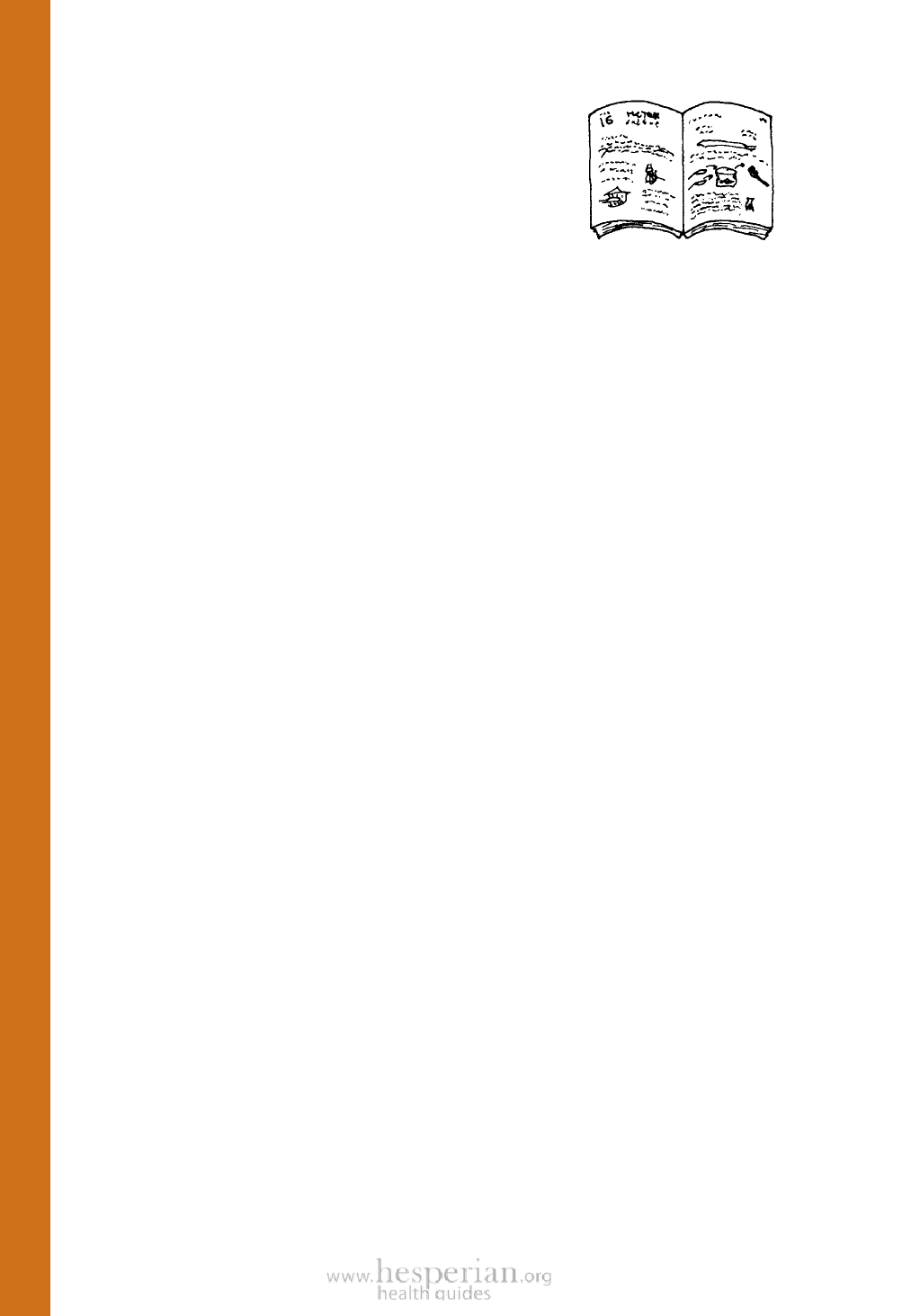
Where There Is No Doctor 2011
MAKING THE BEST USE OF THIS BOOK
Anyone who knows how to read can use this book in her
own home. Even those who do not read can learn from the
pictures. But to make the fullest and best use of the book,
people often need some instruction. This can be done in
several ways.
A health worker or anyone who gives out the book should make sure that people
understand how to use the list of Contents, the Index, the Green Pages, and the
Vocabulary. Take special care to give examples of how to look things up. Urge
each person to carefully read the sections of the book that will help her understand
what may be helpful to do, what could be harmful or dangerous, and when it is
important to get help (see especially Chapters 1, 2, 6, and 8, and also the SIGNS
OF DANGEROUS ILLNESS, p. 42). Point out how important it is to prevent sickness
before it starts. Encourage people to pay special attention to Chapters 11 and 12,
which deal with eating right (nutrition) and keeping clean (hygiene and sanitation).
Also show and mark the pages that tell about the most common problems in
your area. For example, you can mark the pages on diarrhea and be sure mothers
with small children understand about ‘special drink’ (oral rehydration, p. 152). Many
problems and needs can be explained briefly. But the more time you spend with
people discussing how to use the book or reading and using it together, the more
everyone will get out of it.
You as a health worker might encourage people to get together in small groups to
read through the book, discussing one chapter at a time. Look at the biggest problems
in your area—what to do about health problems that already exist and how to prevent
similar problems in the future. Try to get people looking ahead.
Perhaps interested persons can get together for a short class using this book (or
others) as a text. Members of the group could discuss how to recognize, treat, and
prevent different problems. They could take turns teaching and explaining things to
each other.
To help learning be fun in these classes you can act out situations. For example,
someone can act as if he has a particular sickness and can explain what he feels.
Others then ask questions and examine him (Chapter 3). Use the book to try to find
out what his problem is and what can be done about it. The group should remember
to involve the ‘sick’ person in learning more about his own sickness—and should end
up by discussing with him ways of preventing the sickness in the future. All this can be
acted out in class.
Exciting and effective ways to teach about health care are in the book Helping
Health Workers Learn, also available from Hesperian.
As a health worker, one of the best ways you can help people use this book
correctly is this: When persons come to you for treatment, have them look up their own
or their child’s problem in the book and find out how to treat it. This takes more time,
but helps much more than doing it for them. Only when someone makes a mistake or
misses something important do you need to step in and help him learn how to do it
better. In this way, even sickness gives a chance to help people learn.
w28